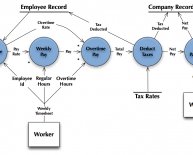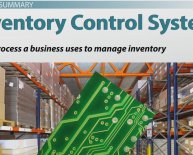
What is a “closed loop?
 As marketers, we have an obligation to continuously prove value to our prospects and clients through our marketing efforts.
As marketers, we have an obligation to continuously prove value to our prospects and clients through our marketing efforts.
At the same time, our management, and especially sales teams, need to understand the value of those efforts in attracting additional prospects, but most importantly, new clients.
The questions many marketers hear (and fear) are:
- “What kind of ROI are we getting on X marketing activity?”
- “Did we get any new customers from it?”
- “How do you know that worked?”
The definitive way for marketers to prove the value of their efforts is through closed-loop reporting - using data from the sales team’s CRM to identify which leads have become customers and tracing the lead’s journey all the way back to the single marketing activity that first brought them into the funnel.
In the following graphic, HubSpot illustrates how syncing marketing and sales software, support the ability to close the loop on your marketing efforts.
Consider the rest of this post a beginner’s guide to closed-loop reporting.
It will address the basics of setting up your technology stack to gather the right data to close the loop, to turning closed-loop reporting into closed-loop marketing.
What is Closed-Loop Reporting?
The term "closing the loop" simply means connecting your marketing efforts to that of sales, in other words, sales reports to marketing and lets them know what happened with the leads they sent them.
This tells marketing where the best and worst leads come from, allowing them to make educated marketing decisions that will be beneficial to the company in the future. With closed-loop reporting, marketers are better equipped with the knowledge they need to attract more qualified leads and in turn, sales has more sales-ready leads to work with.
Connecting Marketing Data with Sales Data
Reporting accurately (and automatically) on the marketing activities that are driving results requires a tight connection between your marketing automation platform (like HubSpot) and your CRM (like HubSpot CRM or Salesforce).
Within your marketing automation platform, the data from leads will be compiled as a contact record that displays how a lead originally found your website (lead source), as well as their engagement with your site pages, blog content, email, and other channels, as they move through the funnel.
As leads reach the point of being Sales Qualified, they will need to be passed on to the sales team.
To automate this process, your marketing automation software should be integrated with your CRM, and vice versa. It is equally as important for your CRM to talk back (send data back) to your marketing automation software when something is altered by a salesperson within the CRM (bi-directional sync). A simple example of this would be when a salesperson marks a lead as an opportunity, and then shortly after, marks the opportunity as closed: “Won.”
Those actions and that data should travel back into the marketing software and automatically update the lead lifecycle stage to “Customer, ” officially closing the loop on that lead’s journey.
The Benefits of Closed-Loop Reporting
What does having a window into the lead’s journey from source to close mean for marketers? Well, one critical thing in particular:
Turn closed-loop reporting into closed-loop marketing
By looking at a report of where your last customers were generated over a period of time, you can identify winning trends related to a specific marketing channel or strategy.
This impacts the development of your marketing strategies moving forward in several ways:
- Learn more about your buyer persona/target market: When you track a user’s first visit to your website and watch their activities on your site, you learn what this particular lead is interested in and how to better position your product or service to close the deal. With this information, lead nurturing is significantly easier and most likely also provides useful insight into your target market as a whole.
- Minimize the risk (know what works and what doesn’t): Many successful marketing campaigns are developed over time, through trial and error, making iterations and improvements as you go. While this is a necessary step for any marketing team, you can minimize the amount of effort by focusing on channels and strategies that are actually driving revenue.
- Reduce time-to-market: With the ability to understand what’s working through data, you can eliminate time spent on testing and launch your campaigns, posts, etc. even faster. In turn, you also:
- Short your sales cycle: The more you know about a lead, the more you know what will resonate with them to close the deal. You won't waste time sending them information they don't want or need.
- Reduce your cost per lead: Increased speed typically = a reduced cost. However, the real key here is that by closing the loop, you may realize that your non-paid social channel is generating more customers than your paid AdWords channel, prompting you to shift or preserve budgets.
One of the massive benefits of marketing automation software (HubSpot in particular) is the ability to report on those effective channels or sources at both a very high and granular level.

















